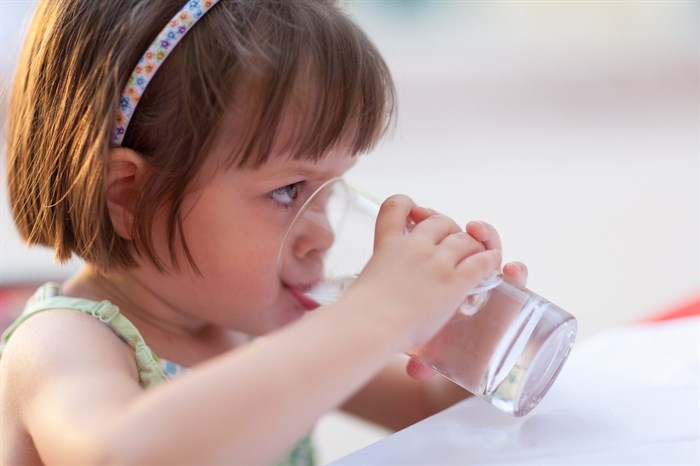
Image Credit: Shutterstock
November 06, 2019 - 6:00 AM
If a recent investigation that found unacceptable amounts of lead in drinking water and a lack of standardized testing across the country has you worried about what's coming out of your taps, we broke down water testing and lead contamination risks in the B.C. Interior.
A nation-wide investigation by journalists found unacceptably high levels of lead all over the country. It also focused on the fact that the federal government and all provinces except Ontario don’t require routine testing of tap water for lead.
The good news for residents of the Interior Health region is that testing of municipal systems is required as part of their permitting system and schools are required by the Ministry of Education to be tested annually.
“We’re pretty fortunate, in our (Interior Health) area that there isn’t broad spread lead contamination,” Ivor Norlin, manager of drinking water systems for Interior Health, told iNFOnews.ca. “We haven’t seen a lot of evidence over the years of a lot of lead in the distribution lines.”
That means for the most part – and with notable exceptions of Rossland and Kimberley – water getting to homes, apartments and other buildings is lead free.
But that hasn’t always meant lead-free taps in the past and that's where the certainty breaks down.
Unacceptable amounts of lead were found in four Kamloops schools in 2017 so lead filters were installed into water systems in all schools in that district. That followed unacceptable lead levels being found in three Penticton schools in 2016.
In the Central Okanagan, testing began four years ago and did find trace amounts “but nothing that was a health safety risk” in some schools, district superintendent Kevin Kaardal told iNFOnews.ca. That led to regular flushing in some cases and the replacement of water fountains in other cases.
That doesn’t mean people aren’t drinking lead in their own homes. While water providers test for lead in their own systems, they don't check sources that can vary greatly depending on age and quality of pipes.
“There can be different sources of lead,” Norlin said. “There can be lead from the actual source water. There can be lead from the actual distribution lines and there’s lead in the homes themselves.”
In the Lower Mainland, for example, Norlin said there is high acidity levels in many water sources that can leach lead out of certain types of older pipes.
It was also a problem in Prince Rupert where lead in some schools sparked concerns. In that case, according to a CBC news article from 2014, the blame was placed directly on old piping in homes, not the municipality.
Lead pipes and lead solder for copper pipes were used in buildings prior to the late 1980s.
Interior Health, in most cases, requires testing of the intake and outflow of the water distribution systems. That determines whether there is lead going into the system or being delivered to homes.
While those results are good, what happens in older homes may not be so good.
“Owners of buildings are responsible for assessing their own plumbing and taking actions to reduce lead,” states a HealthLinkBC article.
Caro Analytical Services is the only laboratory in the Okanagan that tests for lead and has done many municipal and school samples but cannot release results, Sara Gulenchyn, client service manager, told iNFOnews.ca
They’ve also run tests for individuals but that’s usually for people on wells or small water systems.
The cost is $25 per sample, with a minimum charge of $75. That means a homeowner can sample three different taps or pool samples with friends or neighbours.
Or, they can do a minimum of two samples for one tap. Many sources suggest taking a sample first thing in the morning in order to capture the “stagnant” water where lead may have been leached out of pipes overnight. Then “flush” the system by running taps until cold water comes out, which is usually a lower level.
ALS Metallurgy in Kamloops does similar sampling but those are sent to their Burnaby office. They charge $31.75 plus taxes for lead sampling with a minimum charge of $75.
HealthLinkBC says the standard is five parts per billion.
“According to Health Canada, even ingesting a low level of lead may be harmful,” a HealthLinkBC article states. “Lead can harm the intellectual development, behaviour, size and hearing of developing fetuses, infants and young children. The health impact depends on many factors including the amount consumed over time, age, nutrition and underlying health issues.”
In many cases, even where high lead levels are present, flushing water lines typically reduces it.
— This story was corrected on Nov. 18, 2019 at 11:06 a.m. after Interior Health indicated that it was Rossland, not Trail, where there had been concerns.
To contact a reporter for this story, email Rob Munro or call 250-808-0143 or email the editor. You can also submit photos, videos or news tips to the newsroom and be entered to win a monthly prize draw.
We welcome your comments and opinions on our stories but play nice. We won't censor or delete comments unless they contain off-topic statements or links, unnecessary vulgarity, false facts, spam or obviously fake profiles. If you have any concerns about what you see in comments, email the editor in the link above.
News from © iNFOnews, 2019